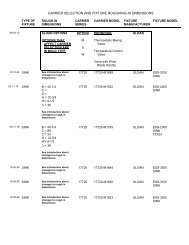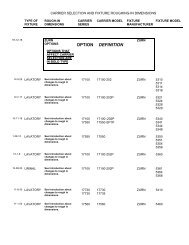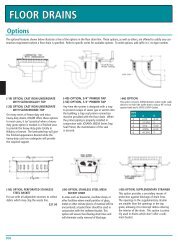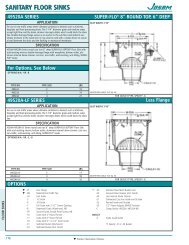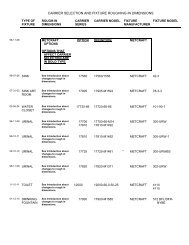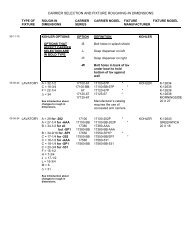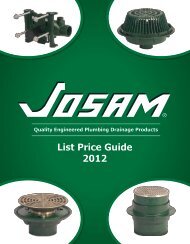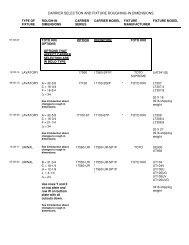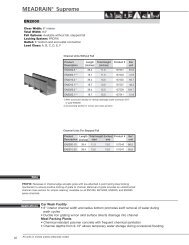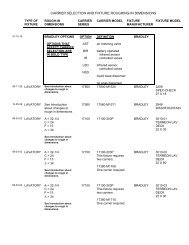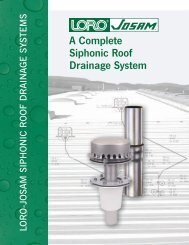You also want an ePaper? Increase the reach of your titles
YUMPU automatically turns print PDFs into web optimized ePapers that Google loves.
FLOOR DRAINSHow To Choose A <strong>Floor</strong> <strong>Drain</strong> (continued)CONNECTIONSThe means by which the drain becomes an integral component of the drainage system must be carefully considered so that specifications will reflectproper outlets compatible to both the piping material and layout. There are five basic outlet connections: inside caulk, hub (outside caulk), no-hub,spigot and threaded. These connections are provided on the three common outlet types: bottom, side, and side with integral trap. There are a fewpointers relative to connections that should be kept in mind. Inside caulk connections (-X) can be made with any type of pipe using JOSAM JIFFEE-JOINTS more quickly and economically than with conventional caulking materials and methods. Hub (outside caulk) connections(-Y) can be made to soil pipe using the popular JIFFEE-SET compression gasket. Spigot connections can be joined with soil pipe hubs usingcompression gaskets or to no-hub using the conventional couplings. Specific details on outlet connections and types are included with theproduct listings in this section.FLOOR CONSTRUCTION<strong>Drain</strong> selection is influenced by floor construction. Elements such as slab type and thickness, surface finish, depth of fill, finished floor materialsand waterproofing requirements are primary considerations. Installation diagrams illustrating various types of drains are included in this sectionto help you choose the right drain.FLOOR DRAINSMATERIALSAfter the duty type is determined, top materials must be considered. The basic material used in the manufacture of floor drain grates is cast iron,conforming to ASTM Specification A48. Cast iron grates are suitable for most duty types in areas where aesthetics is not a factor. In such locationswhere shock or impact loading will be encountered, ductile iron grates should be specified as this material not only possesses superior strength butwill yield rather than fracture under severe service conditions. For installations where appearance and service are important, tops of bronze orNikaloy should be considered. These materials are usually accepted for exposed components of all plumbing drainage products in finished areas.Most heavy-duty types are available with non-ferrous tops over iron grates for those finished areas where service loading is anticipated. Detailedinformation on materials is presented in the Materials and Finishes section of this book and optional top materials are shown with specific series.WEIGHT LOADSApart from their primary purpose of receiving and conveying liquids, floordrains, as integral components of the floor, must be structurally suitable to withstandthe anticipated loads that will be imposed on the floor. Weight supportrequirements of the drain vary with the location, construction, and service condition.The top loading classifications as published in <strong>Floor</strong> <strong>Drain</strong> Standard ANSIA112.21.1M-1980 are as follows:Light-Duty–Medium-Duty –Heavy-Duty–Extra Heavy-Duty–Special-Duty–All grates testing under 2000 lb. (900 kg.).All grates testing between 2000 lb. (900 kg.)and 4999 lb. (2250 kg.).All grates testing between 5000 lb. (2250 kg.)and 7499 lb. (3375 kg.).All grates testing between 7500 lb. (3375 kg.)and 10,000 lb. (4500 kg.).Grates testing over 10,000 lb. (4500 kg.) shouldbe considered special and treated accordingly.When the top loading requirements for a drain have been determined, the dutytype needed can be resolved. Selection is easily accomplished as all JOSAM<strong>Floor</strong> <strong>Drain</strong>s are classified according to duty type in this section. For specificdetail loading data, contact JOSAM Engineering.104



